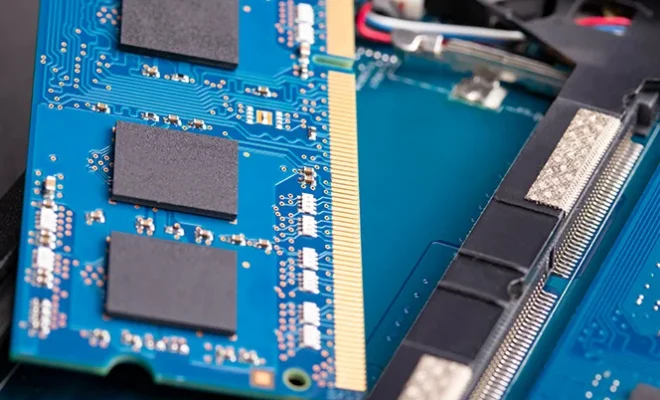CAMM vs. SODIMM: What Is It and What’s the Difference?

CAMM (Chip-Attached Memory Module) and SODIMM (Small Outline Dual In-Line Memory Module) are two types of memory modules used in computers. While both CAMM and SODIMM serve the same purpose of enhancing the performance and storage capacity of a computer system, there are some differences in their functionality and design.
CAMM vs. SODIMM: What Is It?
CAMM, as its name suggests, is a memory module that is directly affixed to the main processor or chipset on the motherboard. CAMMs were developed to overcome the limitations of traditional memory modules, such as DIMMs (Dual In-line Memory Modules). They are smaller, more power-efficient, and are easily integrated into compact computer systems.
On the other hand, SODIMM is an alternative to the larger DIMMs, that are commonly found in laptops and other portable devices. SODIMMs are smaller in size and limit the physical space they occupy on a motherboard, making them a good choice for space-constrained devices.
CAMM vs. SODIMM: What’s the Difference?
Size and Form factor
The most significant difference between CAMM and SODIMM is their size and form factor. CAMMs are attached directly to the motherboard, making them even smaller than SODIMMs. Conversely, SODIMMs fit into a socket on the motherboard, but they are considerably larger than CAMMs.
Memory Capacity
CAMMs have a limited memory capacity as they are intended primarily for ultra-compact devices where space is a premium. But SODIMMs come in various memory capacities and can support up to 32 GB of memory, making them the ideal choice for most systems.
Power Consumption
CAMMs consume much less power than SODIMMs, primarily because they are attached directly to the motherboard. They are designed to be more energy-efficient than traditional memory modules. However, SODIMMs consume more power because they have a voltage rating of 1.35V.
Performance
In terms of performance, both CAMMs and SODIMMs perform similarly. But SODIMMs usually have higher clock speeds than CAMMs, making them the preferred choice for high-performance computing applications.
Conclusion
Both CAMM and SODIMM are useful memory modules that can enhance the performance and storage capacity of a computer system. While CAMMs are typically smaller and more power-efficient, SODIMMs offer a more comprehensive range of memory capacities that support high-performance computing applications. Ultimately, the choice between CAMM and SODIMM depends on the user’s requirements, the available space on the motherboard, and the intended application.






